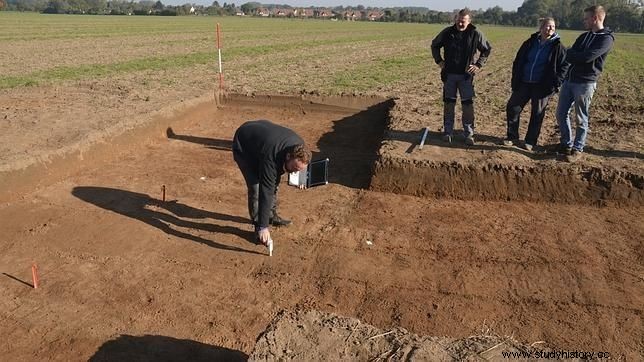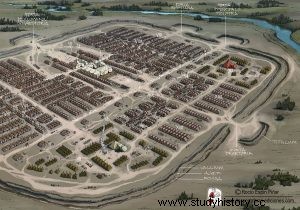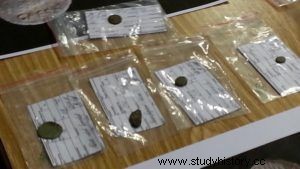
The Battle of the Teutoburg Forest occurs in the year 9 AD. C. In this region of the limes (border in Latin), in the northwest of present-day Germany, Arminio , German leader Varus ally , betrays the consul unifying under his authority several Germanic tribes with whom he laid an ambush that would be fatal for the three legions that made up Varo's forces.
The camp has been discovered thanks to aerial images that made it possible to distinguish their imprint on the ground. After an initial survey with metal detectors, hundreds of objects typical of Roman military clothing have been found. , among which are, for example, sandal studs, fibulae and tweezers. In addition, several coins from the time of Augustus have appeared minted in Lyon as well as coins of Celtic origin .

The remains found allow us to place the camp between the years 12 a. C. and 9 A.D. C . Around 15,000 men were housed inside which would correspond to the three legions that Varus commanded before being decimated by Arminius.
The experts are still cautious since the study of the deposit is still in the preliminary phase, but the first investigations show that this area of the limes had a strategic importance greater than that attributed to it until today.
The appearance of this new archaeological site is key for Germany. In the S. XIX the figure of Arminio was idealized by the Germans and turned into a national hero for his uprising against the Roman Empire. Unfortunately, the reality was blurred with the legend by having only two vestiges about the existence of Arminio:a funerary plaque and a reference to it in the Annals of Tacitus in which he describes him as the Liberator of Germany . From 1529, with the protestant reform , the German would be taken as an icon for independence regarding the Roman Church.

Another of the contributions offered by the site is about the Roman military advance from the area since, contrary to what was thought until now, his location raises two possibilities:that Tiberius arrived further north than previously believed, or that it was Varus himself. who comes to Hanover to later die there.
The changing situation of the limes and its situation in contact with the barbarian population turn these territories into zones of constant conflict and the defeat of Varo marked the end of the expansion of the Empire by Germania. In Desperta Ferro Antigua y Medieval No. 11:The Roman Empire from Trajan to Marcus Aurelius , Angel Morillo Cerdán tells us about the fragile situation of these territories.
You can also learn more about the workings of the Roman army and its settlements in Desperta Ferro Antigua y Medieval #5:The Republic in Peril , we show you how the army of the s. I a. C. by the hand of Yann Le Bohec , which we will republish soon.
Also, in the next Desperta Ferro Especiales Special No. VIII:The Roman Legion (II) The Lower Republic you will find an article by Martin Luik which deals with the Roman camps of the s. I a. C.
Sources:ABC Cultura and Terra Antiqvae
